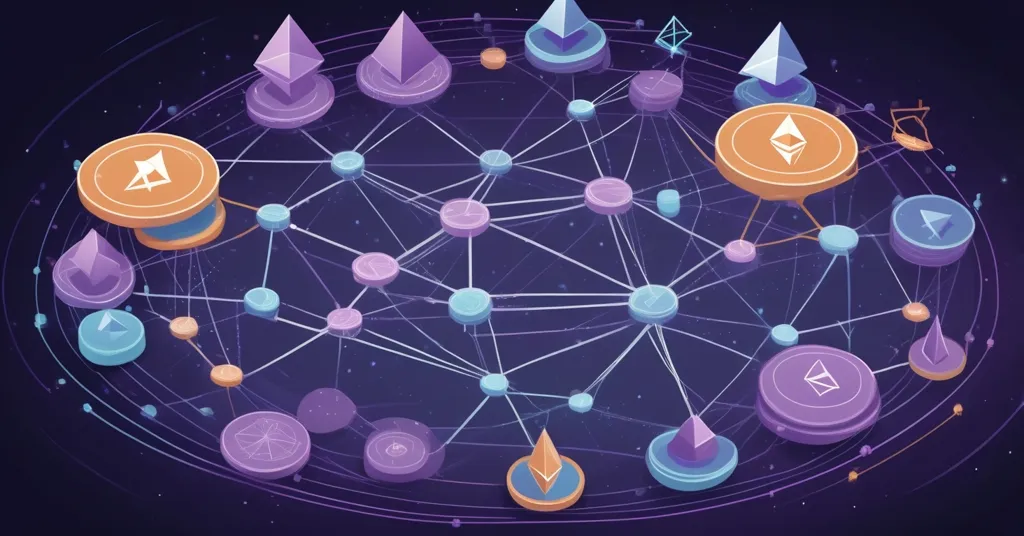Ye Zhang Slams Ethereum L2 Fee Proposals: Calls for Hub, Not Tax

Critics Say Ethereum Must Empower L2s, Not Extract Value from Them
Ye Zhang, co-founder of the layer-2 network Scroll, has ignited a fierce debate within the Ethereum community by opposing the idea of charging fees on Ethereum’s Layer-2 (L2) networks. He argues that such a move would prioritize short-term gains over the long-term growth and scalability that Ethereum desperately needs.
- Ye Zhang criticizes Ethereum L2 fee proposals
- Calls for Ethereum to be a hub for L2 ecosystems
- Ethereum’s mainnet activity declines due to L2s
The Debate Over L2 Fees
Ye Zhang’s critique centers on the notion that imposing fees on L2 networks, which are secondary frameworks built on top of Ethereum to improve scalability and reduce transaction costs, would be akin to a corporate strategy focused on revenue extraction, rather than fostering the decentralized ethos that Ethereum stands for. “Tariffing L2s is one of the most toxic ideas for Ethereum’s future,” Zhang stated emphatically. “It trades long-term scalability and ecosystem growth for short-term revenue — a strategy fit for centralized corps, not credibly neutral platforms.”
Zhang’s stance reflects a broader sentiment within the crypto community, where the balance between decentralization and revenue generation is constantly debated. Ethereum, designed to be a decentralized platform, faces a critical juncture where its core values are at stake. Charging L2 networks could drive them away, potentially to platforms like Celestia, which could undermine Ethereum’s position as a hub for roll-up ecosystems.
Impact of Blobs on Ethereum’s Mainnet
Since the introduction of blobs in 2024, Ethereum’s mainnet has seen a significant decline in both activity and fees. Blobs, a new data structure designed to improve scalability, have shifted much of the network’s activity to L2s like Arbitrum and Base. This shift has led to a 43% decrease in ETH’s value this year, partly attributed to the reduced activity on the mainnet.
According to a recent report by VanEck, Ethereum’s on-chain revenues have dropped by 93% over the past year. This decline is a clear indicator of the impact of L2 networks on Ethereum’s primary network. The shift to L2s has fragmented users and liquidity, a challenge that Ethereum must address to maintain its relevance in the crypto space.
Future of Ethereum
Despite these challenges, Zhang envisions a different future for Ethereum. He argues that the network should focus on becoming a hub for various L2 ecosystems, emphasizing its potential as a store of value rather than a revenue-generating platform. “Measuring ETH’s value by Ethereum’s revenue misses the point,” Zhang said. “ETH’s real strength isn’t in protocol fees — it’s in becoming the hub asset across thousands of roll-up ecosystems. That’s the future.”
Ethereum co-founder Vitalik Buterin, however, suggests a different approach. He proposes that L2s should contribute a higher percentage of their fees to support the mainnet. This stance has sparked further debate, with Zhang warning that such a policy could lead to Ethereum losing its position as the preferred hub for roll-up networks. “Every aligned L2 expands Ethereum’s surface area and social consensus,” Zhang added. “A thousand scalable roll-ups with ETH as the center > any monolithic chain.”
Buterin’s recent L2 roadmap provides more detailed insights into the proposed L2 model, which will use a combination of optimistic, zero-knowledge (ZK), and trusted execution environment (TEE) proofs. This model aims to enhance the security and efficiency of L2 networks while maintaining Ethereum’s decentralized nature.
Upcoming Upgrades and Competitive Pressures
The debate over L2 networks comes at a critical time for Ethereum, with upcoming upgrades like Pectra and Fusaka aimed at improving the network’s functionality and efficiency. The Pectra upgrade, expected in March, will double the number of blobs Ethereum can handle, potentially reducing transaction fees. Fusaka, planned for later in the year, aims to further increase blob space, enhancing Ethereum’s scalability.
However, Ethereum faces competition from other platforms like Solana, which has gained market share due to its single-chain model offering faster transaction speeds and less fragmentation. This competitive pressure adds urgency to the discussions about Ethereum’s scaling strategy and its reliance on L2s.
The introduction of “intents” in Ethereum’s upcoming upgrades could reduce the need for bridges, which have been a source of security risks and transaction delays. This could be a significant improvement for user experience and security, further enhancing Ethereum’s appeal as a scalable platform.
Broader Implications and Bitcoin Maximalist Perspective
The debate over L2 networks reflects broader themes within the crypto space, such as the tension between decentralization and revenue generation, and the role of Ethereum as a store of value versus a platform for transactions. As Ethereum navigates these challenges, the community’s decisions will shape its future trajectory and its place in the evolving landscape of blockchain technology.
From a Bitcoin maximalist perspective, Ethereum’s scaling challenges and reliance on L2 networks might be seen as a sign of its inherent weaknesses. Bitcoin maximalists often argue that Bitcoin’s simplicity and focus on being a store of value make it a more robust and sustainable option in the long run. However, Ethereum’s ability to support a wide range of applications and its vibrant ecosystem of L2 networks also highlight its unique strengths and potential for innovation.
Key Takeaways and Questions
- What is the main argument against taxing Ethereum L2 networks?
The main argument is that taxing L2s would prioritize short-term revenue over long-term scalability and ecosystem growth, which is detrimental to Ethereum’s decentralized nature.
- How has the introduction of blobs affected Ethereum’s mainnet?
The introduction of blobs in 2024 has led to a decline in mainnet activity and fees, with most activity now occurring on L2 networks.
- What role does Ye Zhang envision for Ethereum in the future?
Ye Zhang envisions Ethereum as a hub for various L2 ecosystems, focusing on its potential as a store of value rather than a revenue-generating platform.
- Why has ETH’s value decreased this year?
ETH’s value has decreased by 43% this year, partly due to the shift in activity to L2 networks and the resulting decline in mainnet fees.
- What are the potential risks of imposing taxes on L2 networks?
Imposing taxes on L2 networks could lead to Ethereum losing its position as the preferred hub for roll-up networks, as it might drive L2s to other platforms.



